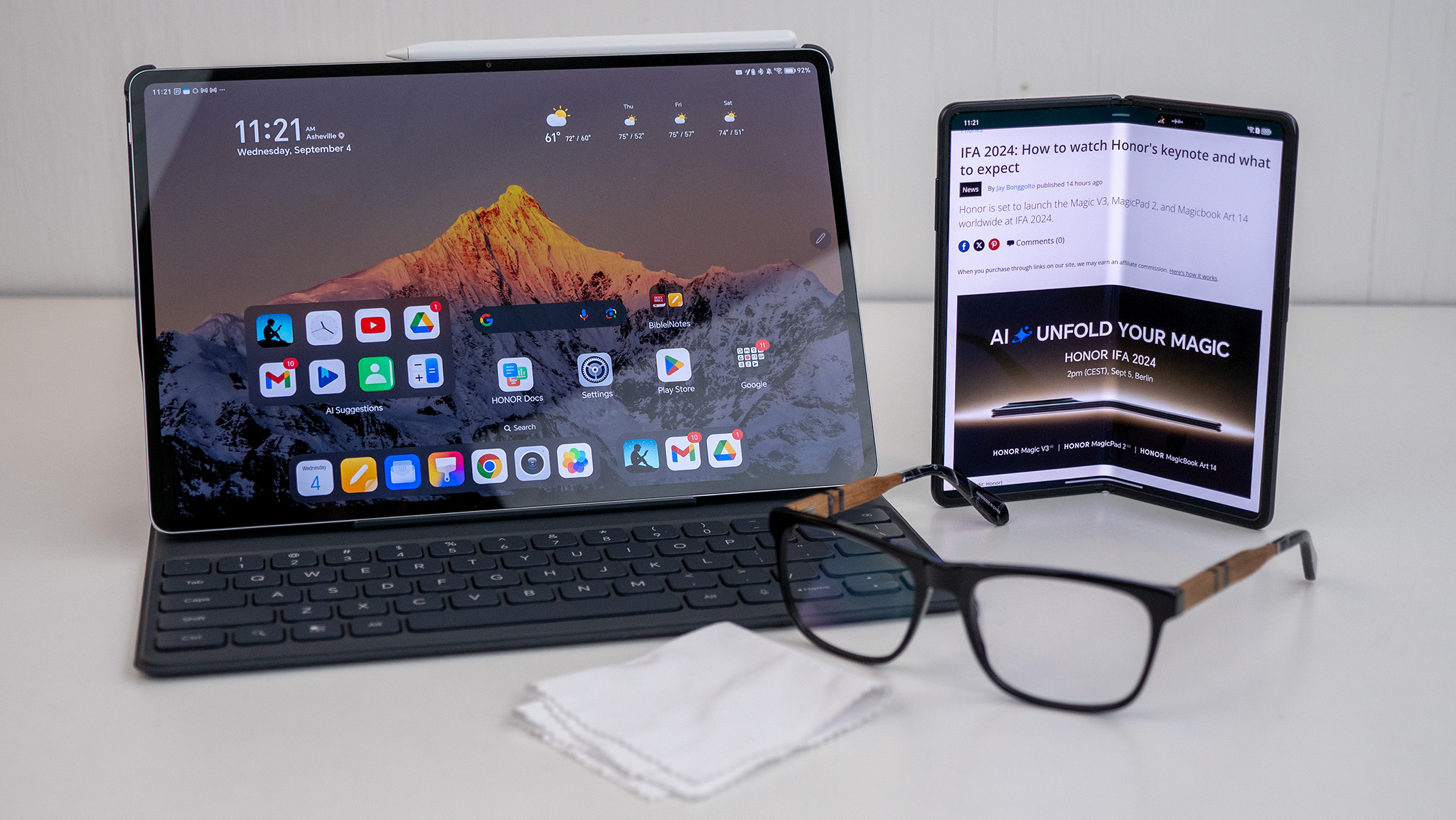
Until last year, I was a person who never needed to wear glasses. But life eventually caught up to me, and a combination of age and the unique strains of modern life caused me to finally visit an optometrist last Spring. While I'm wearing glasses throughout the day now, a new solution from Honor could help reduce that glasses usage over time using, you guessed it, AI.
AI has been a bit of an annoying buzzword this year, but every so often a new feature breaks through all the noise and presents a solution that's actually a solution, not just some minor new form of convenience. Honor previously announced its new AI defocus tech for the upcoming Honor Magic V3 foldable phone, but I can confirm it's also on the new Honor MagicPad 2 tablet.
Myopia is quickly becoming a global issue, as experts predict that it will affect 50% of the world's population by 2050. Honor is only one brand, and while wider adoption of this kind of technology could slow down or even reverse this negative trend entirely, optometrists I spoke with said this kind of therapy only works best for certain age groups.
I've been testing out Honor's AI defocus tech on both the MagicPad 2 and Magic V3 for the past few weeks and it's impressive just how transparently it works. Few companies are taking eye care as seriously as Honor—something that's particularly personal to me as I've been dealing with display-induced headaches due to PWM dimming—and the company's latest devices are a bastion of relief in a world where displays are meant to bedazzle but ultimately hurt us.
Packed with a powerful processor, incredible speakers, and a display that's eye-friendly and gorgeous at the same time, the Honor MagicPad 2 is the new tablet you should be looking at.
Solutions to a real problem
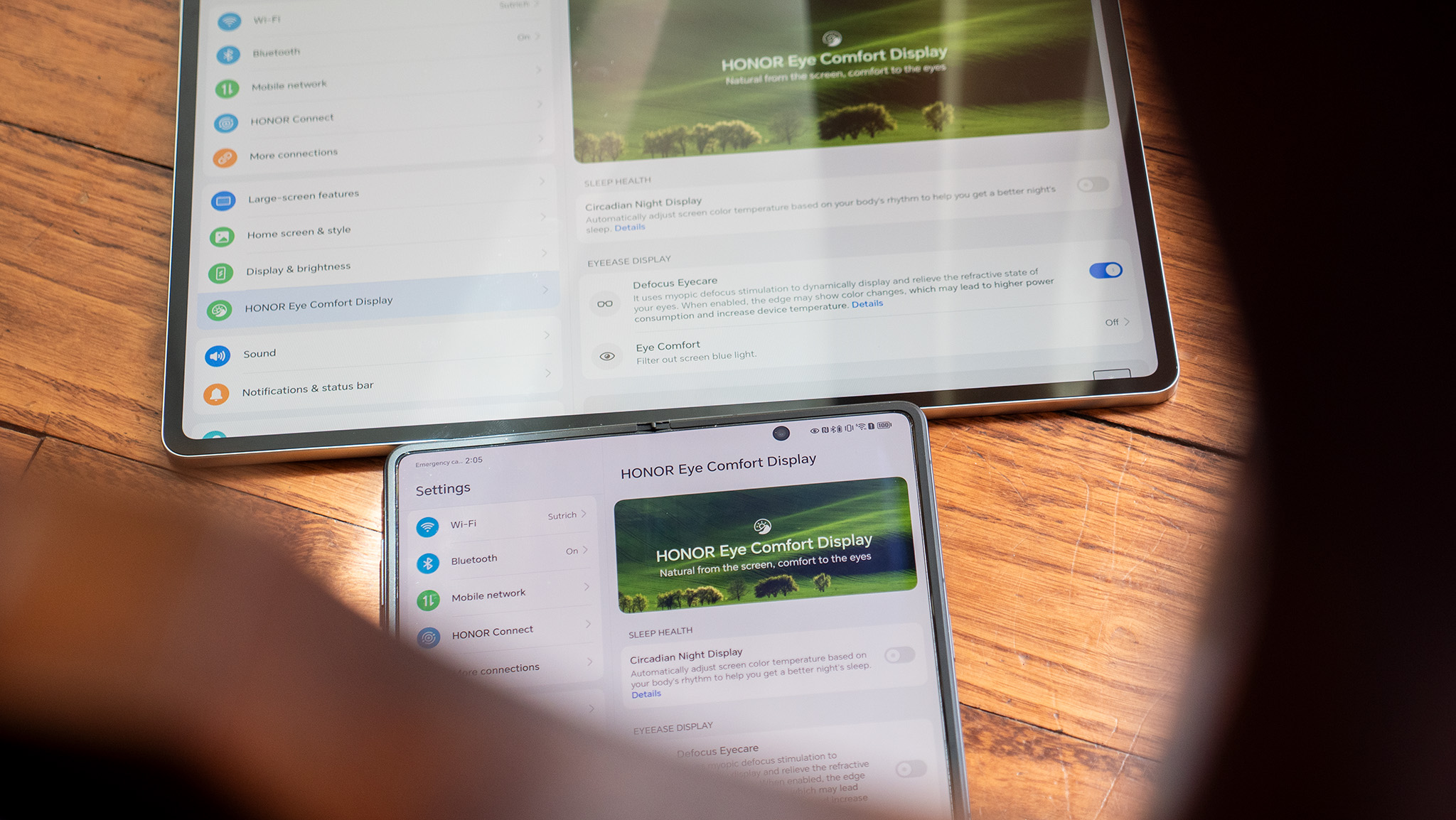
Myopia, or nearsightedness, is a problem created when eyes grow longer in order to better focus on objects that are arm's length or closer to them. In a world where we're constantly looking at monitors or smartphones for long periods of time throughout the day, it's not hard to understand why this is a (literal) growing problem.
But smartphone or monitor usage isn't going away in the modern age, but instead of just relying on glasses usage to fix the problem, Honor is taking a two-pronged approach. The company just introduced the first nearwork-induced transient myopia-reducing display on both the Honor Magic V3 folding phone and the Honor MagicPad 2 tablet.
An estimated 50% of the world's population will have myopia (nearsightedness) by 2050 if something isn't done to reverse the trend.
These special displays use a combination of advanced OLED display technology and AI scene understanding to recreate the effects of Defocus Incorporated Multiple Segments (DIMS) lenses, which have been scientifically proven to slow down the elongation of the eye.
In a document provided to Android Central, Honor links to several pieces of related research that show how simulated defocus solutions can help improve the eyes of anything from tree shrews to human adults when used regularly over a period of anywhere from 45 minutes to 2 weeks.

Special glasses can help reverse myopia, and Honor's solution aims to replicate these types of lenses as closely as possible via clever display technology.
The technology works by separating colors and keeping some in focus while "defocusing" others. There are also times when colors are changed or objects receive faint outlines that place them more or less in focus, depending on the color used. It's similar to chromatic aberration, a lens effect that separates colors via a prism, which can also be seen in 3D movies that provide artificial depth.
In essence, it simulates the act of looking away from your device at a distant object, helping to automate a process that most of us forget to do.
It's difficult to describe and even more difficult to understand unless you see it in action. Surprisingly, I didn't find that this affected image quality negatively. While I had a hard time capturing the effect on camera, YouTuber PhoneBuff did an excellent job of tearing the technology apart in an easy-to-understand way in the video below.
He even corroborates the notion that the effect is normally nearly invisible to the naked eye in most circumstances, which I found particularly interesting. The big downside is that Honor's AI Defocus tech currently only works on the YouTube and Amazon Kindle apps, but Honor says it's working to expand support for more apps in the near future.
But not everyone is convinced that this could be a one-stop-shop solution. According to Bhavin Shah, Behavioural Optometrist at Central Vision Opticians, DIMS therapy—remember, those are the physical defocus lenses that people can wear—is generally only used in people up to age 21 and sees only a 1% success rate beyond that age.
Shah says "I don't believe that stimulating the same defocus on a screen will be detected by the peripheral retinal in the same way that the actual light hits the retina through glasses or contact lenses. I've worn these contact lenses and glasses myself as an adult and it did not make any difference to comfort or eyestrain, the vision is much better with regular glasses or contacts compared to wearing defocus lenses."
Honor has been very careful to pen this as one additional arrow in the quiver for better eye health rather than a one-size-fits-all solution. But while it's not going to work for everyone, it may help quite a few people, and Honor's own research—plus Shah's experience—seems to corroborate the possibility.
Shah seemed hopeful about the tech so long as the study included a proper control mechanism for testers, meaning one group has the defocus AI mode enabled while one has it disabled. "If this change was better than those not using the defocus mode, then it shows some minor benefit. However, a long-term independent study would be the next step before I would start recommending it. I would have to try it myself."
Honor has been very careful to pen this as one additional arrow in the quiver for better eye health rather than a one-size-fits-all solution, but some experts say we need more testing to make sure it's effective.
Shah notes that "our eyes do have a system where only the central vision is clear and the peripheral part is blurred and the eyes keep moving and pointing the central part of the vision to build up a clear picture by joining the clear parts and ignoring the blur, so in theory, if the peripheral defocus were to move based on where a person is viewing the screen at any one time, there may be some effect but I would highly doubt that it would make a significant difference."
I've seen similar mixed results in the PWM-sensitive communities on the LEDStrain forum and in Telegram groups I'm a part of, where one "flicker-free" solution works wonders for some people while it does absolutely nothing to help another person.
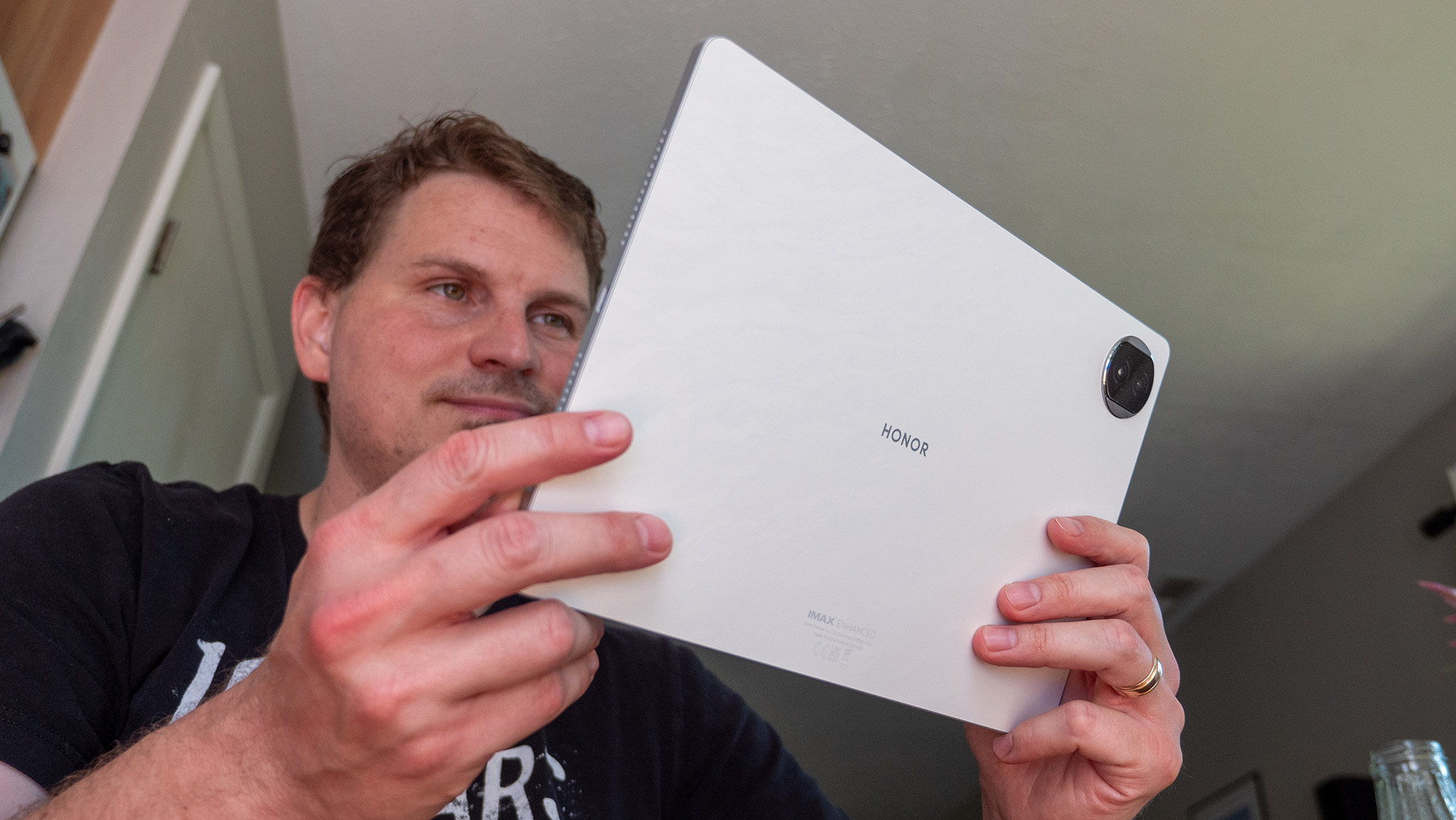
The Honor MagicPad 2 utilizes DC-like dimming at high brightness and an impressive 4320Hz PWM dimming at low brightness. For reference, that's 20x better than the latest iPad Pro models. Even this solution won't work perfectly for everyone, but it can help quite a lot of people who are sensitive to light flicker, like myself.
This won't help everyone but, combined with higher PWM rates and other eye care solutions, mean that Honor is pushing the envelope for eye care more than any other brand.
Shah offered one particular ray of hope based on Honor's research results, though. "Central Choroidal thickness has been shown to increase with near work and then return to normal but there is only a little research on this subject and the impact it has on adults and eyestrain."
AI Defocus solutions like the one in the Honor MagicPad 2 and Honor Magic V3 are designed to keep Central Choroidal thickness from changing as little as possible, meaning our eyes likely won't be as negatively affected by long-term screen use if more people are able to use this kind of technology.
The road to better (eye) health
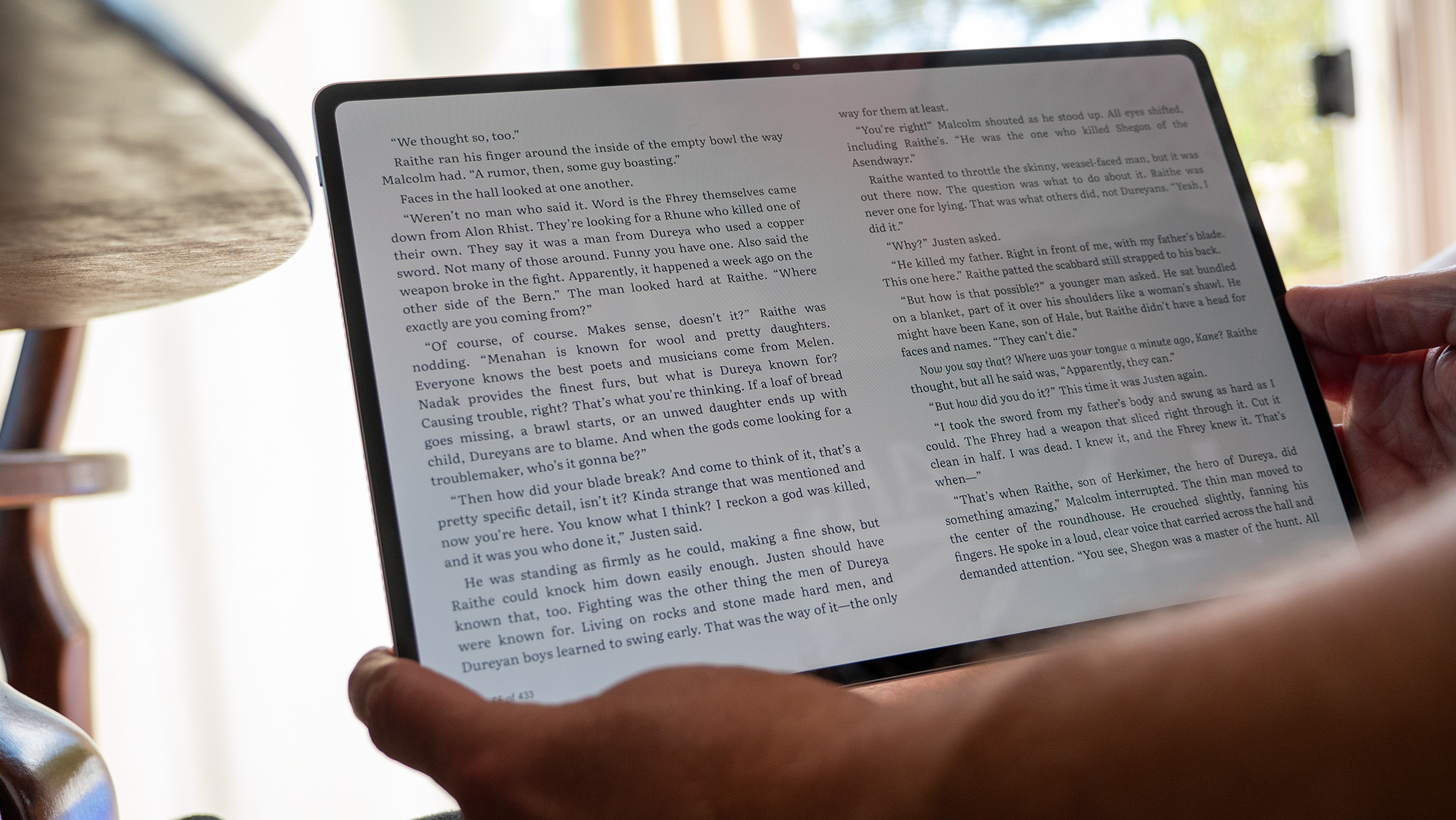
For this article, I spoke with three different eye care professionals and all agreed that less screen time is the best solution. Dr. James R. Kelly from Kelly Vision Center recommends a simple 20/20/20 vision break rule along with frequent blinking when working on screens or using your tablet or phone for a long time. The 20/20/20 rule "means taking a visual break every 20 minutes where the individual looks at something 20 feet away for 20 seconds."
Frequent blinking might sound funny, but it's been shown that blinking decreases by 66% when focusing on something. Additional research has shown that the blink rate for displays versus books isn't any different, but few people—in the past or otherwise—would spend as much time reading a book as often as most people look at a computer monitor or smartphone, meaning most of us don't blink as often as we should.
Shah builds upon this specifically for children, saying "it would be better to give them better habits like cutting screen time, taking breaks, and holding the device further away." In fact, new smartwatches like the Fitbit Ace LTE encourage not only fun outdoor play but also reduced screen time, setting hard limits on games to only a few minutes of screen time per session.
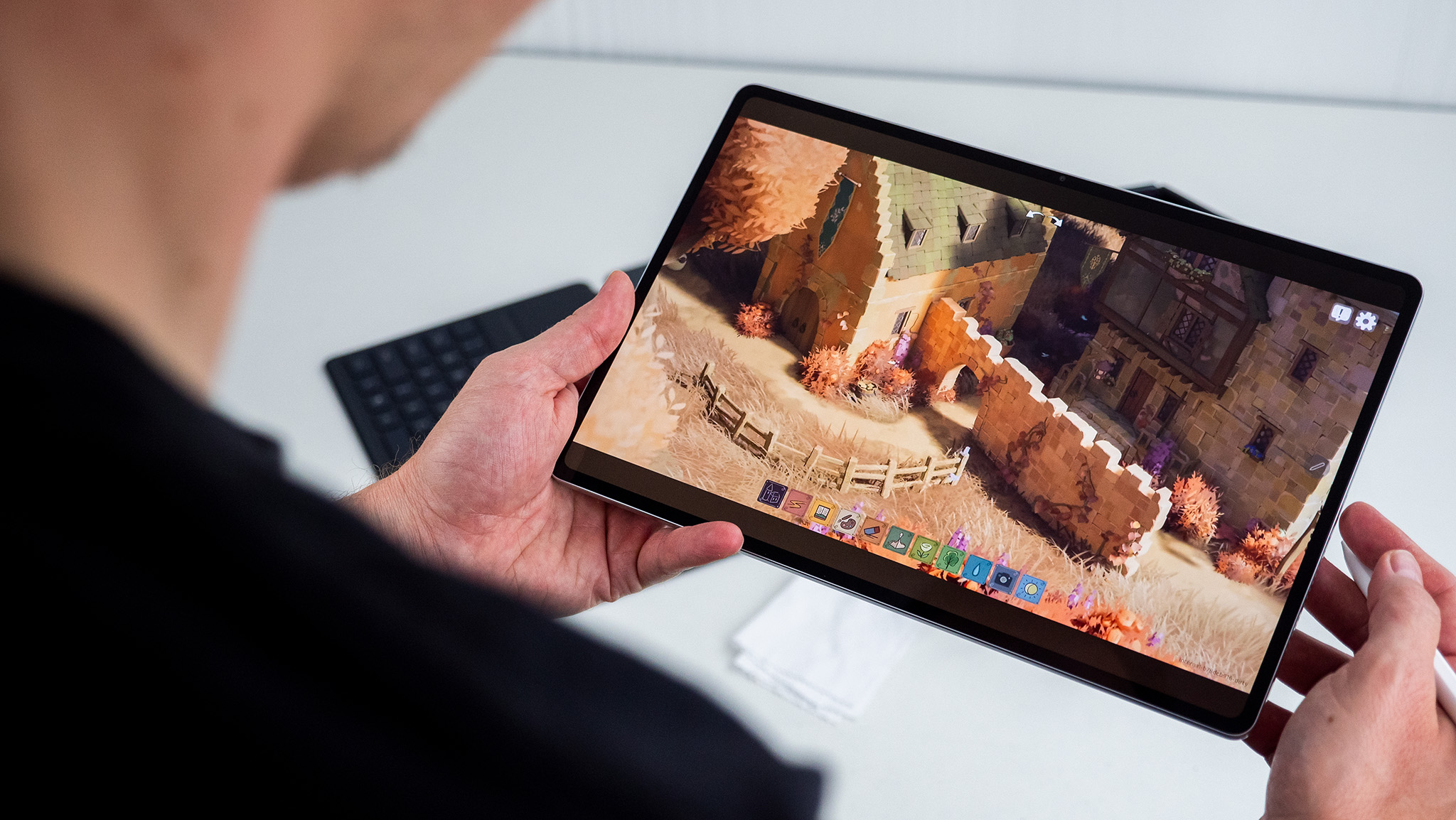
But while kids can get away with reduced screen time, it's not a reality for most working adults in the modern age. Dr. Kelly recommends "proper distancing and angling of screens, along with blue light blocking filters and anti-glare filters, and making sure screens are clean and smudge-free to reduce glare and reflections."
Samsung actually took a fascinating step toward this last part with the display on the Galaxy S24 Ultra, giving it anti-glare properties but the company didn't go far enough to reduce the amount of flicker coming from its relatively slow 480Hz PWM rate. Remember, Honor is pushing 10x that number on its phones and tablets.
Additionally, Dr. Kelly recommends proper room lighting to avoid eye fatigue and strain. I've personally had to remove all smart lights and LED strips from my home office because nearly all of them use PWM dimming and flicker at all brightness levels. I've since switched them out for these Sylvania LED bulbs from Amazon that are not only inexpensive but are also non-dimmable, which is usually the code word in the LED world for "doesn't use PWM."
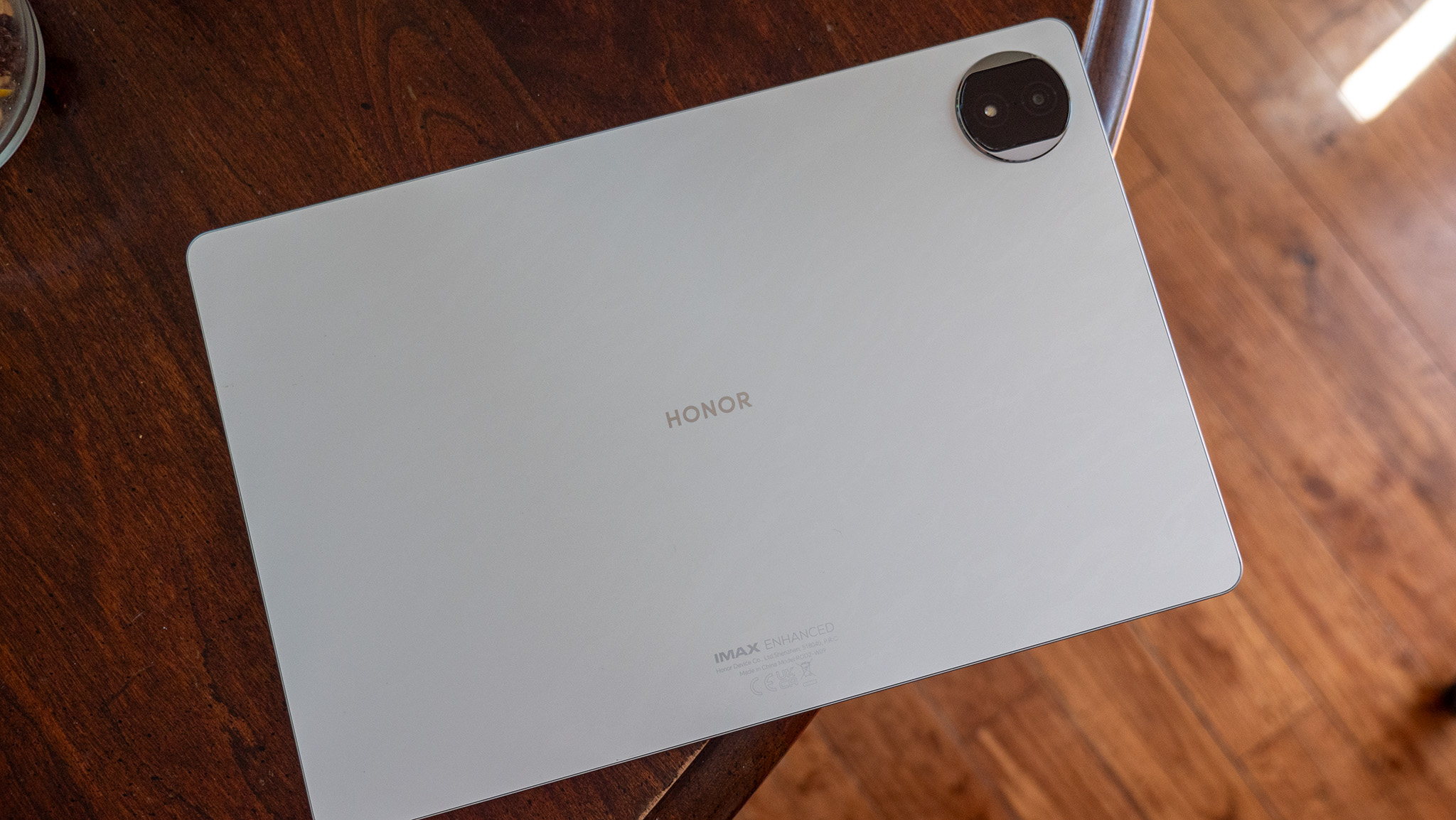
My verdict on the Honor MagicPad 2 and Honor Magic V3 displays? Superb. Sublime, even. The MagicPad 2 has the better display because it's a more consistent PWM rate at low brightness. It uses true 4320Hz PWM at low brightness whereas only the inner display in the Magic V3 has true 4320Hz—the outer display is identical to the Honor Magic 6 Pro's 3840Hz panel, which uses an accelerated 360Hz DC-like cycle to achieve a higher overall PWM frequency.
Either way, I've had no discomfort from either device after weeks of use, which is a lot more than I can say about the Google Pixel 9 Pro Fold. If all else fails, the only other real solution is just to spend more time outdoors and less time in front of screens.







